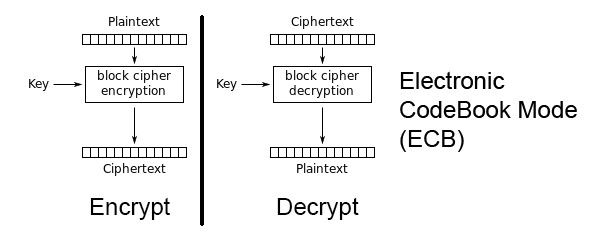Rsa_generate_key_ex Example
- Rsa_generate_key_ex Example Essay
- Rsa_generate_key_ex Example
- Generate Rsa Key Ubuntu
- Rsa_generate_key_ex Example For Kids
- 注意 : RSAgeneratekeyは実際には推奨されてRSAgeneratekey 、現在は単にRSAgeneratekeyexラッパーになっていRSAgeneratekeyex 。 rsagen.cファイルのバージョン1.19.4.2によると、 FIPSmode場合、キーは静的メソッドrsabuiltinkeygenによって生成されます。.
- Deprecated RSAgeneratekey should also be replaced with the RSAgeneratekeyex function. Example: RSAgeneratekeyex(rsa, 4096, e, NULL) Thank you, The Fortress Linux Security Team.

Rsa_generate_key_ex Example Essay
While Encrypting a File with a Password from the Command Line using OpenSSLis very useful in its own right, the real power of the OpenSSL library is itsability to support the use of public key cryptograph for encrypting orvalidating data in an unattended manner (where the password is not required toencrypt) is done with public keys.
The public exponent is the chosen e (65537 in the example above). The private exponent d and the other RSA private key components are computed algebraically from p, q and e. Thanks to the way p and q were generated (two top bits equal to 1), it is guaranteed that n will have size 2048 bits, not 2047.

The Commands to Run
Generate a 2048 bit RSA Key
You can generate a public and private RSA key pair like this:
openssl genrsa -des3 -out private.pem 2048
That generates a 2048-bit RSA key pair, encrypts them with a password you provideand writes them to a file. You need to next extract the public key file. You willuse this, for instance, on your web server to encrypt content so that it canonly be read with the private key.
Export the RSA Public Key to a File
This is a command that is
openssl rsa -in private.pem -outform PEM -pubout -out public.pem
The -pubout flag is really important. Be sure to include it.
Next open the public.pem and ensure that it starts with-----BEGIN PUBLIC KEY-----. This is how you know that this file is thepublic key of the pair and not a private key.
To check the file from the command line you can use the less command, like this:
less public.pem
Do Not Run This, it Exports the Private Key
A previous version of the post gave this example in error.
openssl rsa -in private.pem -out private_unencrypted.pem -outform PEM
The error is that the -pubout was dropped from the end of the command.That changes the meaning of the command from that of exporting the public keyto exporting the private key outside of its encrypted wrapper. Inspecting theoutput file, in this case private_unencrypted.pem clearly shows that the keyis a RSA private key as it starts with -----BEGIN RSA PRIVATE KEY-----.
Visually Inspect Your Key Files
It is important to visually inspect you private and public key files to makesure that they are what you expect. OpenSSL will clearly explain the nature ofthe key block with a -----BEGIN RSA PRIVATE KEY----- or -----BEGIN PUBLIC KEY-----.
You can use less to inspect each of your two files in turn:
less private.pemto verify that it starts with a-----BEGIN RSA PRIVATE KEY-----less public.pemto verify that it starts with a-----BEGIN PUBLIC KEY-----
The next section shows a full example of what each key file should look like.
The Generated Key Files
The generated files are base64-encoded encryption keys in plain text format.If you select a password for your private key, its file will be encrypted withyour password. Be sure to remember this password or the key pair becomes useless.
The private.pem file looks something like this:
The public key, public.pem, file looks like:
Protecting Your Keys
Rsa_generate_key_ex Example
Depending on the nature of the information you will protect, it’s important tokeep the private key backed up and secret. The public key can be distributedanywhere or embedded in your web application scripts, such as in your PHP,Ruby, or other scripts. Again, backup your keys!
Generate release sha1 key android machine. If you haven't yet prepared your upload keystoreand key, first and thenreturn to complete this step.Figure 3. Sign your app with your upload key.If you're signing an app bundle with an existing app signing key, and you’dlike to later opt your app in to app signing by Google Play, check the box nextto Export encrypted key and specify a path to save your signing key as anencrypted.pepk file. You can then use your encrypted app signing key to.Click Next.In the next window (shown in figure 4), select a destination folder for yoursigned app, select the build type, choose the product flavor(s) if applicable.If you are building and signing an APK, you need to select which SignatureVersions you want your app to support. To learn more, read aboutNote: Google Play supportsfor APKs that aren't already published with an existing.Click Finish.Figure 4.
Remember, if the key goes away the data encrypted to it is gone. Keeping aprinted copy of the key material in a sealed envelope in a bank safety depositbox is a good way to protect important keys against loss due to fire or harddrive failure.
Oh, and one last thing.
Generate Rsa Key Ubuntu
If you, dear reader, were planning any funny business with the private key that I have just published here. Know that they were made especially for this series of blog posts. I do not use them for anything else.
Found an issue?
Rietta plans, develops, and maintains applications.
Learn more about our services or drop us your email and we'll e-mail you back.